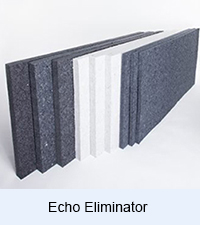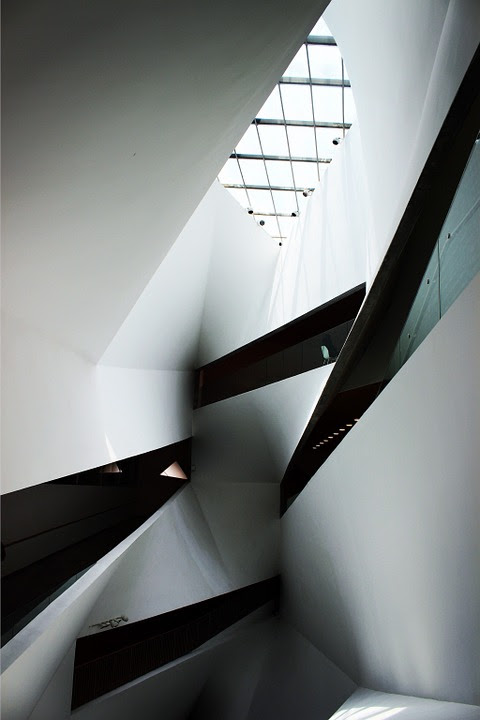Hospital Soundproofing ceiling tiles
Hospital soundproofing with quality soundproofing materials assumes significance, because of the common patient complaints about the high levels of noises prevailing there. The sources are many, the patient monitoring systems, mobile phones, wheelchairs, elevators and squeaking wheel carts are a few to mention. The noisy atmosphere in a hospital affects the inmates by depriving their sleep, increasing blood pressures and by interfering with pain management and wound healing. The hospital staffs, mainly the doctors and nurses who are constantly exposed to high decibel levels get stressed. The average noise levels in hospitals are much above the desirable levels of 35 decibels. To reduce noise levels and ensure good soundproofing in hospitals with quality soundproofing materials have started implementing several acoustical control measures.
Selection of Soundproof Ceiling Tiles
Speech privacy is a factor influencing hospital soundproofing. Suitable ceiling tiles as soundproofing materials must be selected depending upon the room type. The tiles appropriate for lobbies and nurses’ area may be different from ICU’s or private rooms or wards. The communication between the doctor, patient, and nursing staff must be clear and intelligible. A proper acoustical ceiling tile can help to achieve this. Before selecting tiles decide to what extent you want to block, absorb, or mask noises. A suspended acoustical ceiling system is good for hospital soundproofing for absorbing noise and creating an acceptable acoustic environment with quality soundproofing materials.
Acoustical Ceiling Tiles as soundproofing materials Recommended
Glass fiber acoustical ceiling tiles are suitable for sound absorption. To make them acceptable for hospital soundproofing where cleanroom applications are involved, the soundproofing materials like acoustic panels are covered with anti-microbial film. They are also particle-free. Glass fiber acoustical ceiling tiles are very suitable for hospital spaces like open offices and corridors because their sound isolation qualities are low and hence they are most appropriate for corridors and open offices where background noises often mask other noises.
Mineral fiber acoustic ceiling tiles lower absorption properties and they are good for reducing sound transmission. These acoustical ceiling tiles are suitable for hospital soundproofing where both sound isolation and absorption are required.
Neonatal intensive care units need special attention in a hospital soundproofing program. A combination of mineral fiber and glass fiber is a good option for neonatal care units. Sound product or soundproofing material Gypsum board also can be used as a backing.
Cast mineral fiber composition is found to enhance sound absorption and sound isolation.
For hospital soundproofing of walls select surface-mounted wall panels one inch thick, or other sound-absorbing materials that will absorb noise in large areas where there are chances of noise build-up.
For floors, the soundproofing material selected must reduce impact noise originating from footfalls and from other sources like rolling carts.
Avoid gaps between tiles laid on floors to eliminate vibrations due to rolling trolleys. Carpet tiles are better than normal carpets which retain dust and are also difficult to clean.
Some More Soundproofing Tips
For improving hospital soundproofing select ceiling materials that have high sound absorptive properties for areas like outpatient departments and wards. Wherever possible, provide walled partition instead of curtains for better patient comfort and privacy.
Hospital Soundproofing Tiles supplied by Interior game. Ceiling Tiles absorb sound from the room or hall and it stops echo sound in the hospitals where ceiling height is higher. Soundproofing materials are imported from the USA and built new innovative acoustic products built for Indian conditions. For your requirements of soundproofing materials and products call us or visit us www.interiorgame.info or send an email to pgopalakrishnan2002@gmail.com.
Our Acoustical Soundproofing products and services
Acoustics, hospital soundproofing, soundproofing materials, fiber cement board, fiber cement board, raised access floor, Acoustic wall panelling, Acoustic walls, Soundproofing, Noise control, Echo Elimination, Noise Isolation, Sound Isolation, Home Theatre Construction, Home theatre, Studio construction, Recording studio, Reverberation control, Echo Control, Home Cinema, Noise and Vibration, Music studio construction, Fabric wall panels, Absorbent panels, Noise Free Ceilings, Soundproof Doors, Noise Control in Homes, Noise control in theater, Sound leakage control, Indoor Sound Block, Sound Absorbing Materials supplier.
Wall panels, Reduce Sound level, Block the sounds getting out, Sound Controlling door, Sound Control Material, Sound Proof panels, Noise-free homes, Recording studio Sound Control, Echo Controller, Echo minimizer, Echo reducer, How to control echo, Noise-free glasses, Noiseless Auditorium, How to control sound by wood, How can I record without noise, Noise proof window panels, Soundproofing suppliers in Bangalore, Soundproof at home, Sound control at gym, Best company for soundproof, Top companies in noise control, Top companies in acoustics, Top companies in noise control, Soundproof screens, Home theater essentials.
Pleasant homes, Don’t allow the sound to go out, Block the sound, Soundproofing solutions, Soundproofing top companies list, List of companies in acoustics at Bangalore, Noise control in school, Soundproof wall treatment, Low cost soundproof materials, Best acoustics companies in India, Noise control solutions, Vibration control, What should I do for control noise, How to build a noiseless home, How to maintain sound to not go out, Suggest some sound leakage blocking panels, Isolate the sounds, Transmission control of sound, Loudness controller.
Noise barriers in India, Sound pressure level controller, Control sound by interiors, Control traffic noise, Soundproof insulation, Noise control sources, Soundproofing Products, Sonex, Ceiling, Wall Panels, Sound Control Curtains, Equipment Enclosures, Acoustical Baffles and Banners, Solid Wood, Veneer Acoustical Ceiling, Wall Systems, Professional Audio Acoustics, Vibration & Damping Control Fire Retardant Acoustics, Hearing Protection, Moisture and Impact Resistant Products, Floor Impact Noise, Noise Reduction, Sound Absorbers, Noise Barriers, Fabric Wrapped Wall Panels, Acoustical Foam, Egg Crate, Acoustical Sealants and Adhesives, Outdoor Noise Control, Assistive Listening Devices, OSHA, FDA, ADA Compliance, Acoustical Design and Consulting.
ECHO ELIMINATOR, SOUND SILENCER, DBA PANELS, POLY MAX ACOUSTICAL PANELS, DECORATIVE FABRIC PANELS, HANGING ACOUSTICAL BAFFLES, SOUND ABSORBING FOAM, SONEX FOAM PRODUCTS, NOISE BARRIER-NOISE BLOCKERS, SCHOOL NOISE MANAGEMENT, FLOORING UNDERLAYS, SEALANTS–ADHESIVES–GREEN, ACOUSTICAL CEILING TILES, SOFTWALL – WALLMATE, VIBRATION MOUNTS–HANGERS, HVAC PRODUCTS – SILENCERS, ACOUSTIC – SOUNDPROOF DOORS.
ACOUSTIC ENCLOSURES, WALL INSULATION, ELECTRONIC SOUND LEVEL METER, SOUND TEST-ACOUSTICAL ANALYSIS, ADJUSTABLE DOOR SEALS, DESIGNER ACOUSTICAL CURTAINS, ACOUSTIC WINDOWS – INSERTS, RSIC SOUND ISOLATION CLIPS, ACOUSTI-BOARD, OUTDOOR BARRIER WALL SYSTEM, ONE STEP DECORATIVE SYSTEM, ACOUSTIMETAL PANELS, SOUND SCREEN NOISE MACHINE, ACOUSTI-GASKET TAPE, T-MOLD SYSTEM, ACOUSTICAL FABRIC SELECTION, ADJUSTABLE SPRINKLER CUTTER, WOOD WOOL PANELS, TECHNO ACOUSTIC WALL PANEL,


